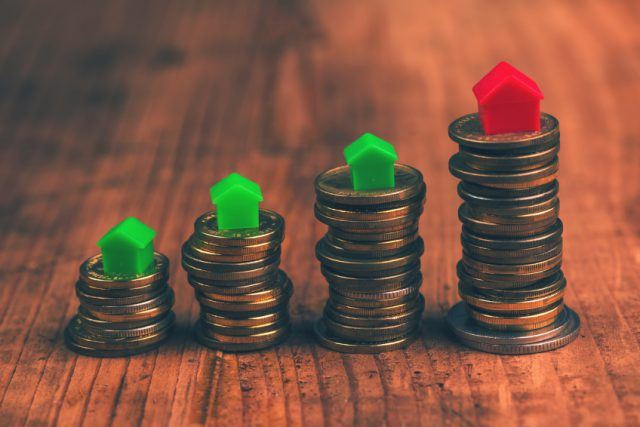Home » Uncategorised »
House Price Growth Continues to Rise in June
This article is an external press release originally published on the Landlord News website, which has now been migrated to the Just Landlords blog.

Annual house price growth in the UK continued to rise during June, despite unpredictable demand levels and uncertainty surrounding the EU referendum, according to the latest House Price Index from Nationwide.
The building society reports that the north-south divide across the UK continued to widen during the second quarter (Q2) of the year, while the average rate of house price growth rose to 5.1%.
Over the past 12 months, annual house price growth in the UK has remained fairly stable, ranging between 3-6%. This trend was maintained in June, with price growth standing at 5.1% on average, up slightly from the 4.7% seen in May. The average house price in the UK is now £204,968, up from £204,368 in the previous month.
However, the Chief Economist at the Nationwide, Robert Gardner, notes that it has been difficult to record levels of demand: “It has become difficult to gauge the underlying pace of demand in recent months, due to the surge in house purchase activity in March ahead of the introduction of Stamp Duty on second homes on 1st April.
“It will therefore be difficult to assess how much of the likely fall back in transactions in the quarters ahead is because buyers brought forward purchases to avoid additional Stamp Duty liabilities, and how much is due to increased economic uncertainty following the referendum result. Gauging the likely impact on house prices will be even more difficult.”

House Price Growth Continues to Rise in June
Gardner explains how the recent Brexit result will affect the property sector: “Ultimately, conditions in the housing market will be determined by conditions in the wider economy, especially the labour market. It is too early to assess the impact of the referendum vote on the economy. However, it is encouraging that the labour market had remained robust in recent months, with solid employment growth and the unemployment rate declining to an 11-year low in April. Borrowing costs also remained close to historic lows.
“Moreover, the lack of homes on the market – with estate agents continuing to report a record low number of properties on their books – will also provide underlying support for prices, even if demand softens.”
The latest index reveals that regional house price growth has also maintained the trend recorded in recent quarters, with southern parts of England seeing faster rates of growth than the north.
Nationwide reports that the outer metropolitan region again experienced the strongest rate of annual house price growth in Q2, at 12.4%, up from 12.2% in Q1. Despite a slowdown in Q2, London was still the second strongest region, with prices up by 9.9% to a new all-time high – some 54% above pre-recession levels, compared with 10% for overall UK house prices.
The north of England is the only area to record an average house price decline in Q2. As a result, it has replaced Northern Ireland as the UK’s least expensive place to live. Average prices in the north are currently 9% below their pre-crisis peak.
Gardner comments: “It remains the case that the pace of house price growth tends to decline as you move from the south to the north of the country, even though prices in the south are already well above pre-crisis levels, while in Northern Ireland, Scotland, Wales and the north of England, prices remain well below their 2007 highs.
“It remains unclear how long this pattern will persist, and whether the north-south divide in house price levels will continue to widen.”
So how will the London property market fare in the coming years?
“The outlook for London is even more difficult to assess, because landlords and overseas buyers play a larger role in the market, and the outlook for demand from these sources is particularly uncertain,” says Gardner. “It is unclear how recent Stamp Duty changes and upcoming changes to the tax deductibility of landlords’ expenses will affect investor demand in the years ahead.”
He continues: “Similarly, it is difficult to gauge how sentiment from overseas buyers will be impacted by increased economic uncertainty on the one hand, and the sharp decline in sterling on the other (which, if sustained, reduces the cost of UK property in foreign currency terms).
“Property prices in the capital have been supported by extremely robust labour market conditions, as well as strong investor demand in recent years. Employment is now over 17% higher than its pre-crisis peak, compared to 6% higher in the UK overall. How labour market conditions evolve will be key, though valuations in the capital are already stretched by historic standards – the price of a typical London property on our measure (£472,384) is 12 times average earnings in the capital.”
The CEO of online estate agent eMoov.co.uk, Russell Quirk, comments on the figures: “This month’s Nationwide House Price Index has shown that the housing market is sound and defined by a cemented imbalance between low supply and ever increasing demand, low mortgage costs and a deeply-ingrained aspirational home owning culture.”




